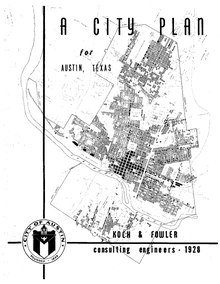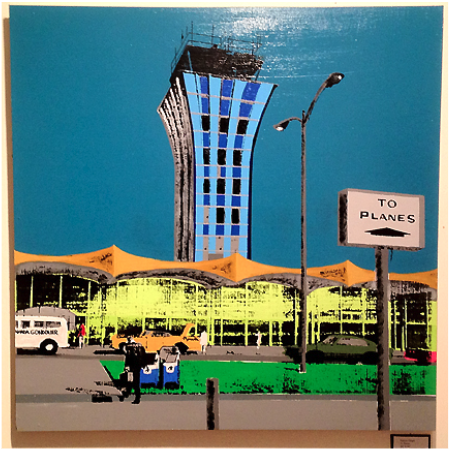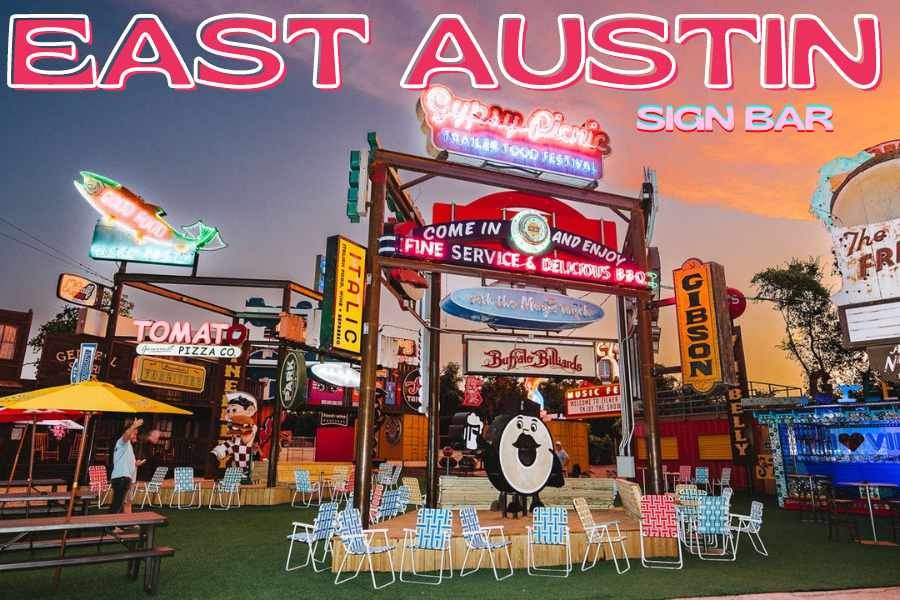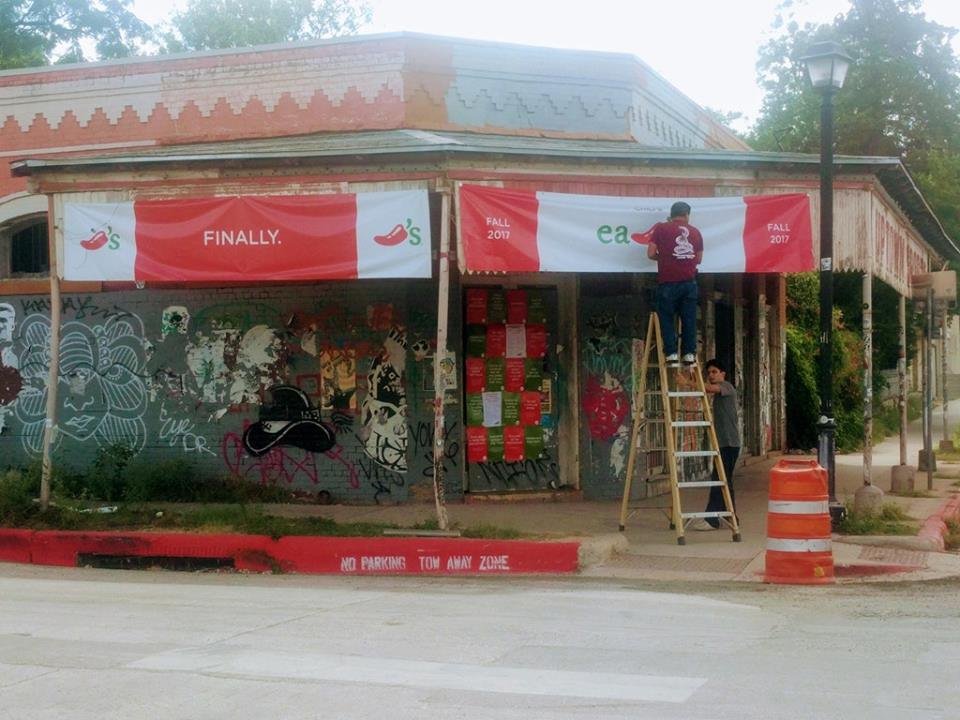east austin HISTORY
LEGACY
East Austin stands as a vibrant testament to resilience and cultural richness, having triumphed over a history marked by segregation, community activism, and explosive growth (gentrification).
This historic area, once the epicenter of Austin's Hispanic and Black communities, has woven a diverse tapestry of cultures, each leaving an indelible mark on its streets and skyline.
Today, East Austin is a harmonious blend of its past and present — from traditional Hispanic eateries and historic Black churches to contemporary art scenes and hipster cafes. Its walkable neighborhoods, bustling with life and community spirit, are not just places to live; they are beloved landmarks of a city that has embraced change while honoring its profound legacy."
AUSTIN PLANNED THIS
1928, the City of Austin’s Master Plan designated East Austin as the area where industries, African Americans and Mexican American communities would relocate.
Prior to this re-zoning, African American and Mexican American communities were throughout Austin.
1928 master plan of the city of Austin recommended "that all the facilities and conveniences be provided the Negroes in this district, as an incentive to draw the Negro population to this area.
Master Plan also zoned East Austin for industry and light commercial like liquor stores and pawn shops.
It resulted in East Austin being the home of numerous polluting facilities and industries including the Tank Farm, the Holly Power Plant, Browning Ferris Industries (BFI), Matheson Tri-Gas Company, and Pure Casting Facility.
Thus perpetuating the zoning issues in East Austin. In response to the burden created by this “inappropriate land use and zoning” that placed Austin minorities next to toxic plants
As a result over 90% of industrial zoning was placed in East Austin; the community has been fighting for years to clean it up. Successful efforts include the closing of the Tank Farm and Browning Ferris Industries (BFI) recycling landfill, as well as the more recent closure of the Holly Power Plant.
61 acres of Tank Farms + PODER
Airport Blvd & Springdale
For 35 years, fuel storage tank facilities (“Tank Farms”) polluted a predominantly Latino and African American neighborhood in East Austin.
In 1992, PODER discovered that the Tank Farms—owned by Exxon, Mobil, Chevron, Star Enterprises (Texaco), CITGO and Coastal States—had violated carcinogens air emission regulations and had contaminated groundwater. Emitting gasoline vapors including cancer-causing benzene into the air in this area for several decades exposing residents to toxic gases. Six major oil firms had dozens of large fuel tanks that were all leaking gasoline fumes into the air and liquid leaks contaminated groundwater well beyond the tank farms into the neighborhoods.
After PODER’s 18-month campaign, the Tank Farms were relocated and the oil companies agreed to remediation.
PODER worked with the neighborhood and was able to convince the city government to down-zone the land from industrial to office.
EAST AUSTIN…. NOW
East Austin is today known as "The Hippest Hipster Neighborhood" in America.
GENTRIFYING
In the context of East Austin, the neighborhood of Johnston Terrace, specifically, has been ranked as the fourth-fastest gentrifying neighborhood in America, with a significant median sale price change of +148.2% over a five-year period from 2012-2017.
BOOM
City of Austin records show that 2009 - 2019 :
More than 44 percent of all new commercial building permits issued in Central Austin fall within the eastern crescent,
Are is a roughly 18-square-mile area bordered by I-35, US 183 and the Colorado River
This is a sharp increase from previous decades:
Between 1999 and 2008, about a third of such permits fell in that area
Between 1989 and 1998, a quarter
Between 1979 and 1988, less than one-fifth
AUSTIN | 18 Hour City
City that is lively all day and into the night, but not all night like 24 Hour Cities. More affordable than 24 Hour Cities.
18-hour city has proven to be a good prognosticator of growth. The Urban Land Institute (ULI), tracked the progress of cities it designates as 18-hour and the data is compelling. Millenials are migrating to these cities, believing they can thrive.
Live -Work - Play
Attractive Mix of
Growth
Opportunity
Culture
Affordability
Uniqueness
All combine to create sense of place
This shift stems from the fact that millennials are desirous of living in an urban setting with work and play options nearby as opposed to a long commute from the suburbs.
Austin
Denver
Nashville
Portland
24 Hour Cities
Boston
Chicago
Los Angeles
New York
San Francisco
Washington, D.C
Though it was built in an empty field on the edge of town in the late 1920s. Like many older airports, Mueller was on the outskirts of town in1930. Austin’s population grew rapidly, becoming a high-tech hotspot and flights into the city increased substantially. Mueller sat landlocked on 711 acres in the middle of Austin, with urban growth on all sides.
Officially dedicated on October 14, 1930, the main terminal building was dedicated on May 27, 1961, and expanded in 1983. The east terminal was dedicated in April 1990.
Beginning in the 1980s, neighbors living around Robert Mueller Municipal Airport and beneath its flight path banded together and lobbied for its relocation
Community groups including Citizens for Airport Relocation (CARE) and the Airport Neighborhoods Defense Association (ANEDA) lobbied to relocate the airport away from the city, closer to Manor.
They actively campaigned against relocation to Bergstrom Air Force Base. In 1993, after years of lobbying and a lawsuit that pressured the City to act, voters approved a proposition to relocate the airport to Bergstrom Air Force Base. Mueller Airport closed in 1999.
Mueller Airport
Mueller Development
1999 Last Flight Left Mueller
2004 Catelus chosen as developer
$230 Million in Infrastructure
Keeps getting denser
2007 3.6 Million SF Commercial
2017 4.5 Million SF Commercial
Since 2004
have increased the number of residential units by 35%,
commercial/institutional floor area by 24%.
Now approaching the PUD cap of 6,450 dwelling units and 5.3 M SF of non-residential space.
TODAY
Just over 1,300 apartments and 265 condominiums are under construction.
A final section of homes is adding 371 rooftops.
Three vacant tracts, totaling about 10 acres, remain to be developed. One parcel is slated for housing — either condos or apartments — while uses for the other two sites have yet to be determined.
Mueller
711 Acres
COOL FACT Austin’s land development code requires most single-family houses to be on a minimum 5,750-square-foot lot. However, Mueller has homes on plots as small at 600 square feet, a design choice that was made possible through a planned unit development, or PUD.
The development doubled its goal to fill at least 30% of its retail space with local businesses, and every resident lives within 600 feet of a green space.
140 acres of public parks and open space
11,200 employees today
Estimated 16,500 employees are expected to work at Mueller when it is fully built out
By then, Mueller will have 6,890 houses and apartments
The development also will have a total of 4.6 million square feet of commercial and retail space
Dell Childrens Hospital - 34 Acre Campus
Once it is fully built out, 1,550 of Mueller’s homes and apartments will be at below-market rates,
Mueller’s goal to have 25% of its housing earmarked for income-qualified residents will make it one of the highest concentrations of affordable housing in Austin
Over $1.8 billion dollars of real estate has been developed at Mueller to date
Plaza Saltillo
10 Acres on 6 City Blocks
241,486 employees within 3 miles
191,755 residents within 3 miles
$73,650 average household income
Project Details:
800 multifamily units
150,000 SF of office space
(700+/- onsite employees)
115,000 SF of retail
BORDEN DAIRY PLANT
“BORDEN EAST”
ENDEAVOR
21-acre industrial site currently occupied by the Borden Dairy plant
located at 71 Strandtman Cove near Highway 183
capping the maximum height of the project at 120 feet, with an impervious cover limit of 75 percent — the site’s current zoning allows a maximum of 80 percent.
Proposed adding an amendment requesting a 60 foot setback from the southern property line, in response to concerns from area neighborhood groups that the development would impact the Colorado River Park Wildlife Sanctuary located between the Borden site and the river.
10 percent of the project’s residential units or roughly 140 homes will be designated as affordable housing, either 60 or 80 percent of the regional Median Family Income.
As part of the agreement, the developers will also provide a donation to the anti-displacement nonprofit East Austin Conservancy, the amount of which will be based on the final MFI target of the project’s on-site affordable units — about $630,000 if the units are offered at 60 percent MFI and increasing to roughly $1,260,000 if the units are offered at 80 percent MFI
A concept site plan filed last year for the project, which shows one potential layout for a redevelopment of the 21.38-acre plant site. You’ll note that under the terms of the Planned Development Agreement for the property, the developers are allowed to provide more than 1,700 fewer parking spaces than would normally be required.
PLANS
1,400 homes
220 hotel rooms
400,000 square feet of office space
106,000 square feet of retail
Redevelopment
The Hatchery - RBJ Building
17 Acres
TEAM : Southwest Strategies Group, Momark Development, and Diana McIver & Associates
1972 housing complex for low-income seniors built on a 17.8-acre tract southeast of downtown
Rehabilitate the 245 senior living apartments in the existing tower at the property,
279 additional senior units in an adjacent five-story building wrapped around the tower
500 market-rate residential units
176,000 square feet of Class A Office
16,000 square feet of retail +restaurant
The name of the park and the Hatchery project itself celebrates the RBJ property’s slightly odd history as the former site of a federal fish hatchery from the 1940s to the late 1960s, which raised game fish like bass and channel catfish in 19 ponds irrigated by pumps drawing from the nearby Colorado River
Public Infrastructure - Longhorn Dam
City Of Austin’s Public Works Department
Improve this areas safety and pedestrian environment
Infrastructure
1-35 Expansion
I-35 Expansion - $4.5 Billion Project
Austin City Council resolution to delay I-35 project denied by TxDOT (october 2023)
Travis County Commissioners also sent a letter
What TxDOT Said
“This is a long overdue project designed with the community and for the community,” TxDOT Austin District Engineer Tucker Ferguson said in a news release. “Today’s resolution to delay by the Austin City Council is not indicative of the partnership TxDOT has cultivated with the city.”
The Context
Without federal intervention, it’s unlikely that any resolution put forth by city or county leaders will stop the project, Council Member Chito Vela said.
“The project is moving forward, and I'm not aware of any legal or political strategy that will stop it,” Vela said.
1-35 Expansion + City Of AustiN
While the reality of the project sinks in, council members are working to identify funding sources for the $700 million required for its cap and stitch project before their December 2024 deadline.
The deck spanning Cesar Chavez and Fourth streets is one of about 15 caps and stitches the city hopes to build over the sunken roadway. The entire project comes with a $600 million-$800 million price tag, and TxDOT officials said the city would need to have it all by December 2024 for all of the projects to be realized. When completed, it will span 5.3 acres and hold up to two- to four-story buildings.
“We must do everything we can to avoid the worst case scenario of an uncapped highway—a trench—that would even further divide East and West Austin with all the loud noise, light and air pollution that comes with it,” Vela said.
The city already ap plied for a $105 million grant that would fund a 5.3-acre deck over the highway from East Cesar Chavez to Fourth streets, and they are working on finding funding for more caps and stitches in North and South Central portions of the highway.
The US DOT will announce the winner of the grant in February.
Austin would be required to match $45 million to fund additional amenities on top of the deck, including shade trees, restrooms and pavilions.
Expect the grant to be “highly competitive” as Dallas and Seattle are also applying.
Elon Musk
Has made Austin the centerpiece of his new Texas empire.
Gigafactory Texas—said to be the second-largest building in the world by volume, after the Boeing Everett Factory, in Washington State—
Musk’s other businesses in and around Austin include the
Tunnel-drilling Boring Company
Neuralink -which is working on a computer-brain interface; and
SpaceX, which is seeking to colonize Mars.
THROWBACK
Instead of Austin Green is a 2,125-acre active sand and gravel mine located in east Austin, the land became TESLA. Due to its strategic location, it had been identified as a “Town Center” within the Imagine Austin Comprehensive Plan.
https://www.lionheartplaces.com/work/austin-green
Elon
SOL AUSTIN
2016 Austin Business Journal “Green Award Winner”
40 Unit SF4 Development, Leed Platinum & 5 Star AEGB Rating
Done in partnership with the GNDC (16 of 40 units affordable housing) under SMART Housing Program
6.5 Acre Pecan Tree Farm
BECK-REIT First East Austin PROJECT
1101 East 6th
2006
2018
BECk-REit Latest East AustiN PROJECT
2422 East 7th
“One-Stop-Shop' for Developers”
48,000 SF Office + Retail
Office will be filled with “Owner/Occupants”
Current Partners
Legacy Lighting
Breaking Ground SUMMER 2024
“Newcomers to Austin fall prey to nostalgia almost instantly—and, with a longtime resident like us, the symptoms can become comically acute. But the feeling is more like watching someone you love become someone you didn’t expect. It doesn’t mean that you’re not still in love—
Austin forty years ago Austin was like a graduate student with modest tastes and few resources; now she’s sporting jewels and flying first class. She’s sophisticated, well travelled, and well connected, and those aren’t necessarily bad things—they’re just disorienting.
Nostalgia is a way of remembering when things were simpler; it also makes us forget that simple things can be boring and frustrating. Instead of running on the fumes of memory, Let’s reacquaint ourselves with the actual Austin we are living in—
A city rapidly transforming into America’s next great metropolis. “
~ Lawrence Wright - The New Yorker - “The Astonishing Transformation of Austin:” https://www.newyorker.com/magazine/2023/02/13/the-astonishing-transformation-of-austi
Nostalgia
MAPPED GROWTH
5 Year + 10 Year Heat Maps of Commercial Real Estate Development
East Austin “State Of The Market”
East Austin Temperature Gauge : sign up to receive exclusive monthly reports to gauge commercial real estate leasing, sales, and development activity. Created specifically for East Austin Commercial Real Estate owners.
meet
Join our in-person events
Coffee Meetups, Seminars, Speaking Events
PAST events
gallerythe otto - 1201 cesar chavez
quietly wealthy episode
east coffee meet
east growth summit - ABJ

















































